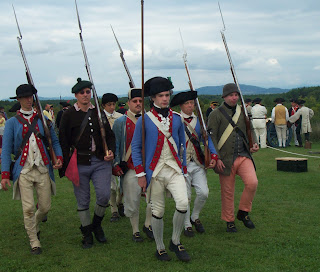
New York State battlefield will benefit from some of the more than $1.3 million in National Park Service grants recently awarded to help preserve, protect, document, and interpret America’s significant battlefield lands. The funding from the National Park Service’s American Battlefield Protection Program (ABPP) will support 27 projects at more than 75 battlefields nationwide.
This year’s grants provide funding for projects at endangered battlefields from the Pequot War, King William’s War, the Revolutionary War, War of 1812, Civil War, World War II and various Indian Wars. Awards were given to projects in 17 states or territories entailing archeology, mapping, cultural resource survey work, documentation, planning, education and interpretation.
The Park Service also announced the award of an additional $1.3 million in grants to help with land acquisition at four Civil War battlefields. Grant projects include fee simple purchases at Averasborough, North Carolina ($103,380)- Bentonville, North Carolina ($60, 380)- Cool Springs, Virginia ($800,000) and Ware Bottom Church, Virginia ($367,263). The grant funds were made available under the Consolidated Appropriations Act of 2012 (Public Law 112-74), which appropriated $8,985,600 for the Civil War battlefield land acquisition grants program.
Federal, state, local and Tribal governments, nonprofit organizations, and educational institutions are eligible for the battlefield grants, which are awarded annually. Since 1996, the ABPP has awarded more than $13 million to help preserve significant historic battlefields associated with wars on American soil. More information is available online at www.nps.gov/hps/abpp.
New York State Grantees
Natural Heritage Trust (New York) $80,000
Long before the American Revolution, the colonies fought with the British in a series of colonial wars,
including King William’s War and King George’s War. These conflicts, though changing little of the
political landscapes of the time, would have a significant impact on future French and English
relations and the position of American Indians in those relations. Working with its partner, Saratoga
National Historical Park, the Natural Heritage Trust intends to develop a cultural resource inventory
for the overlapping battlefields of these two wars that are near Saratoga. This information is crucial
to developing an archeological research design for each of the battlefields.
The Public Broadcasting Council of Central New York, Inc. (New York) $67,744
In conjunction with the Bicentennial of the War of 1812, Public Broadcasting Council of Central New
York hopes to raise awareness about New York’s unique role in the conflict with a series of
documentaries about the state’s battlefields. The broadcasts will not only be looking at the well
known battlefields of New York, but also several of the lesser known battlefields. It is hoped that
these documentaries will not only educate but also help spur preservation for the War of 1812
battlefields of New York.
The Research Foundation of State University of New York (New York) $56,194
One of only two major engagements of the Revolutionary War’s Sullivan-Clinton Campaign, the
Battle of Chemung was fought two weeks before the better known Battle of Newtown. This ambush
on Continental forces would produce more casualties than Newtown, while the burning of New
Chemung would become an example of how Continental forces would deal with American Indians in
the future. An archeological survey will be used to help better determine the battlefields defining
features as well as assess their condition. This information will be compiled into a GIS map for
support of a future National Register nomination.
Saratoga Preserving Land and Nature (New York) $21,425
The Battles of Saratoga culminated in the fall of 1777 with the surrender of British forces under
General John Burgoyne. This American victory reinvigorated the war effort and is seen as a turning
point in the Revolution. The Saratoga P.L.A.N. looks to interpret the fighting at one of the Saratoga
campaign battles, that of Fish Creek, and wishes to do this with a number of interpretive kiosks.
Working with the National Park Service, the interpretive trail would also integrate with other
interpretive trails in the area.
For a full list of the grantees, click here.
 Saratoga National Historical Park (the Saratoga Battlefield), located on Routes 4 and 32 in Stillwater, will celebrate its 75th anniversary in 2013 and is looking for photographs showing people enjoying or working in the park from the 1900s to today.
Saratoga National Historical Park (the Saratoga Battlefield), located on Routes 4 and 32 in Stillwater, will celebrate its 75th anniversary in 2013 and is looking for photographs showing people enjoying or working in the park from the 1900s to today.
.jpg)




